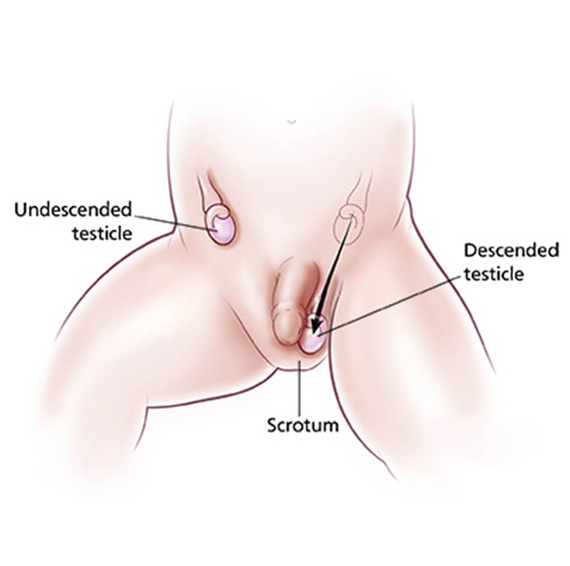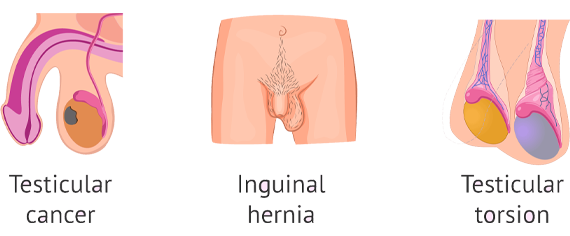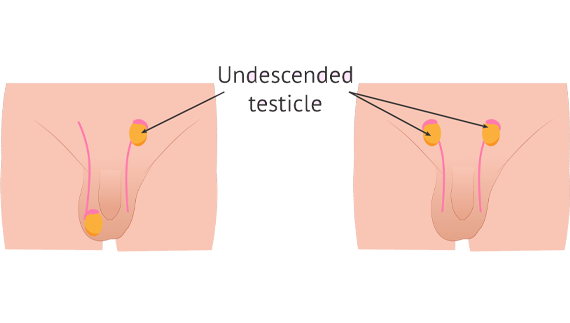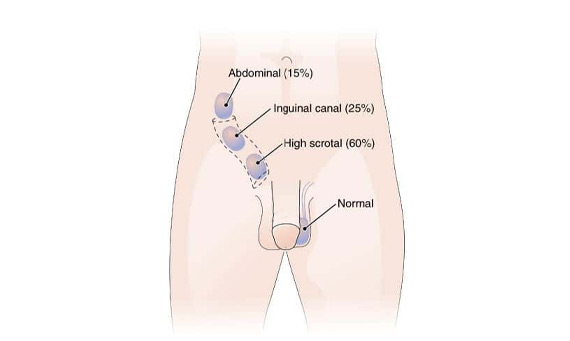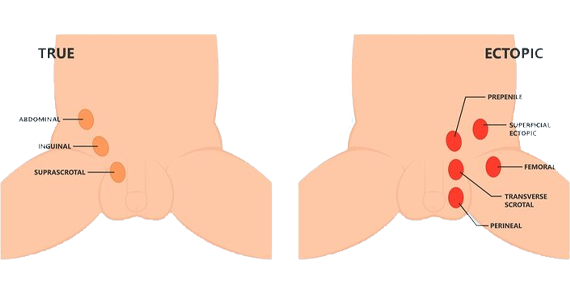Cryptorchidism, also known as undescended testis, is the failure of one or both testes to descend into the scrotum. It is the most common birth defect of the male genital tract.
About 3% of full-term and 30% of premature infant boys are born with at least one undescended testis. However, about 80% of cryptorchid testes descend by the first year of life (the majority within three months)
The testicles are the organs where sperm and testosterone (the male sex hormone) are made. The scrotum keeps the testicles in a cooler setting than the body. This is because sperm can’t grow at body temperature. During childhood, sperm in the testicles go through a process that results in mature sperm at puberty.
If a testicle has not reached the scrotum by the time the baby is 6 months of age, it is considered an undescended testicle. This can occur to one or both testicles.
